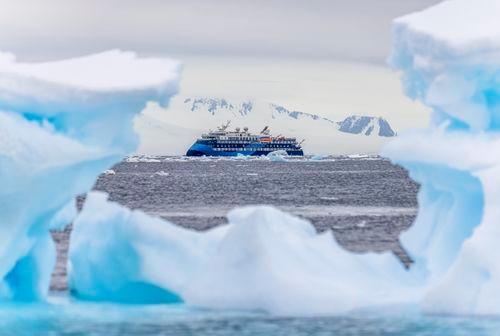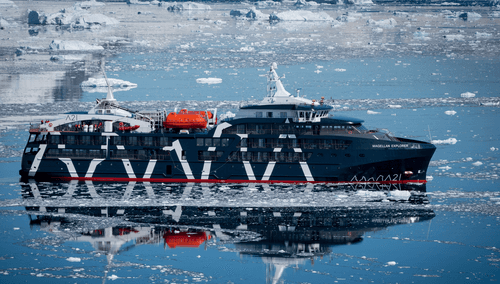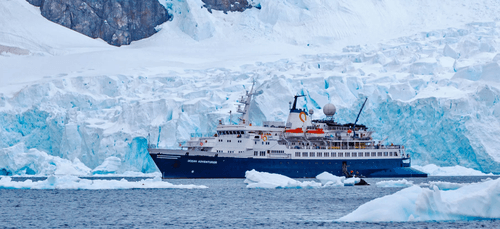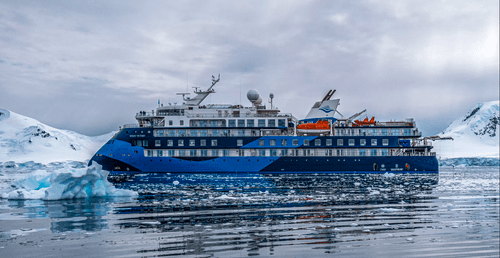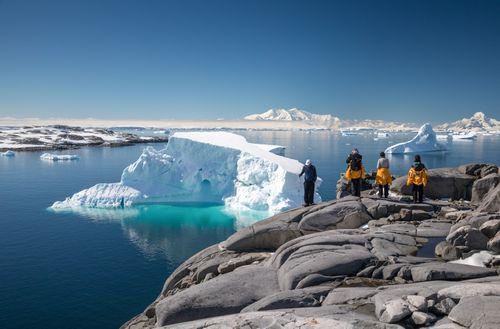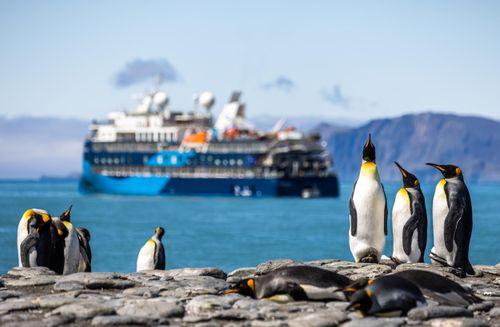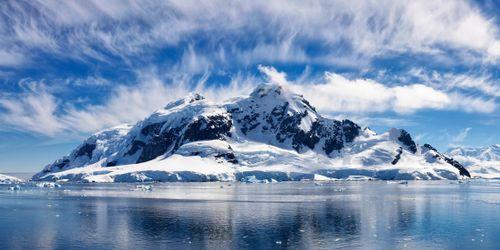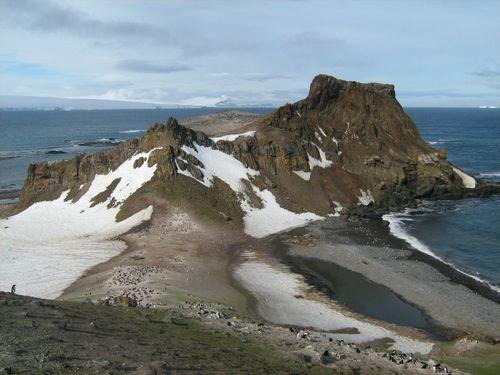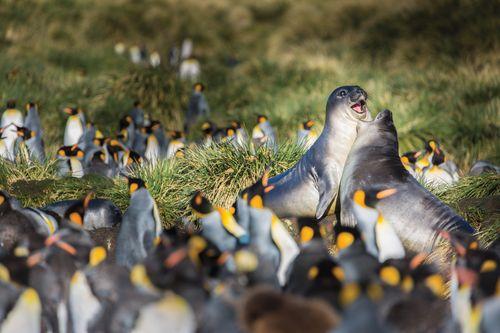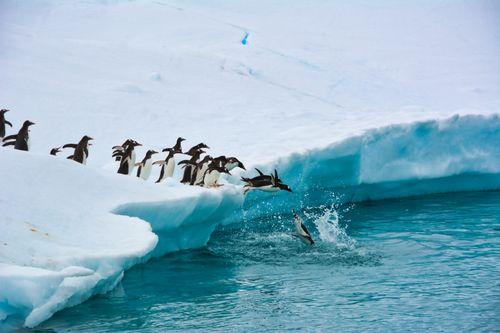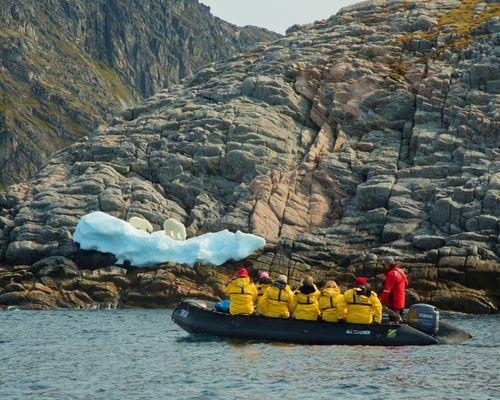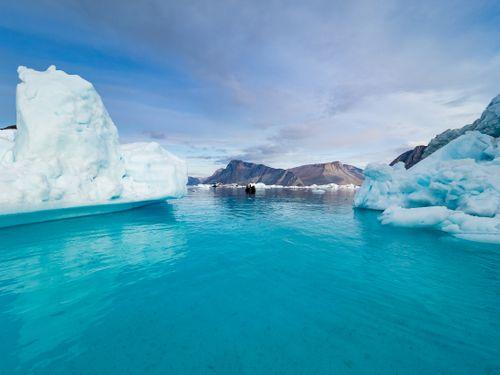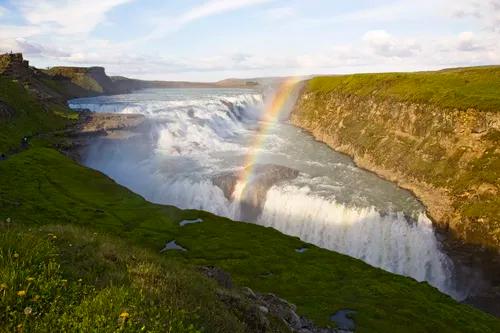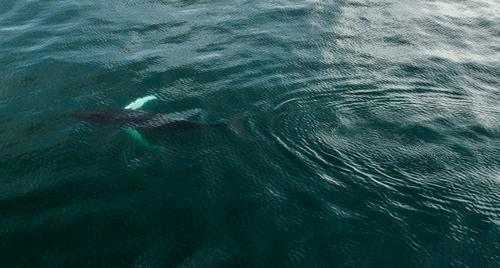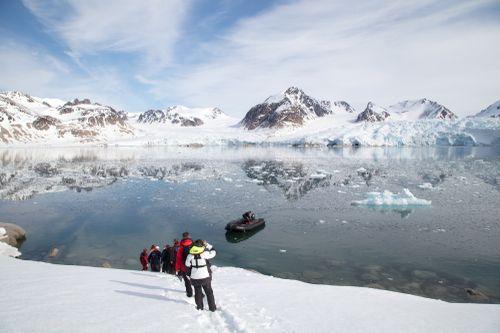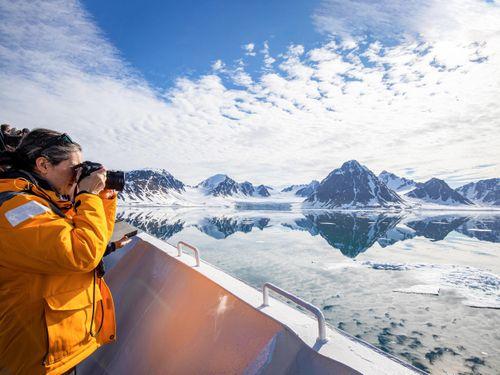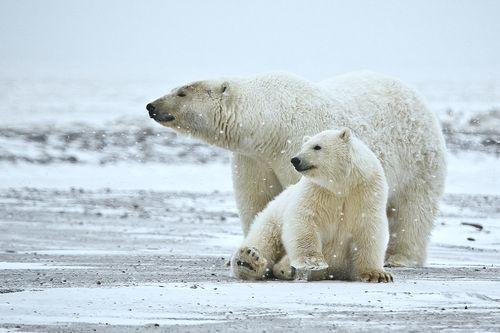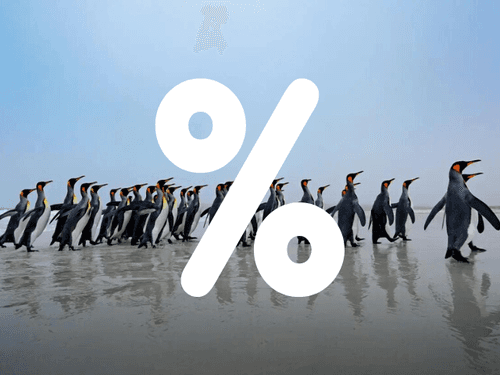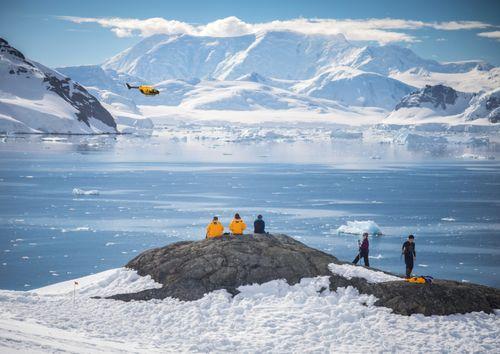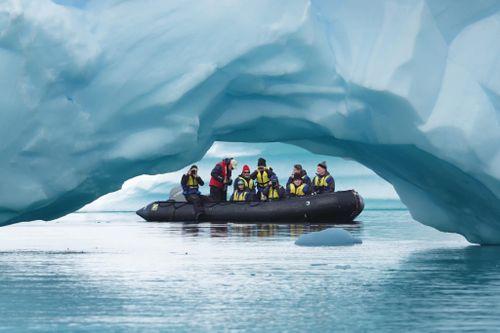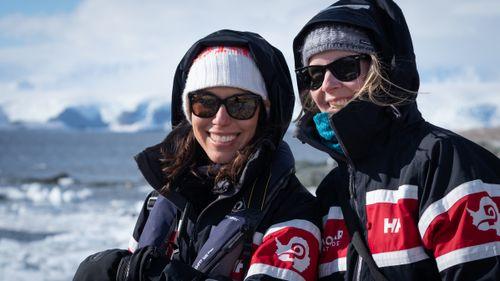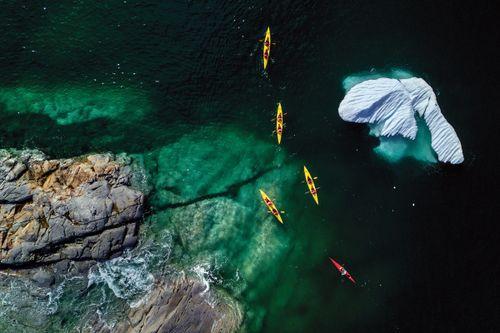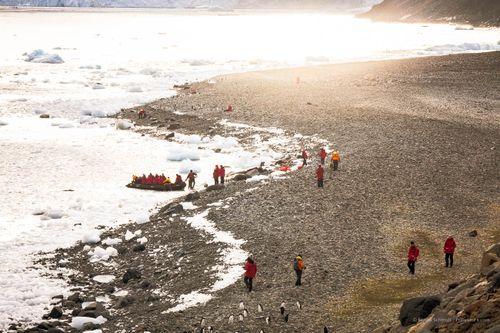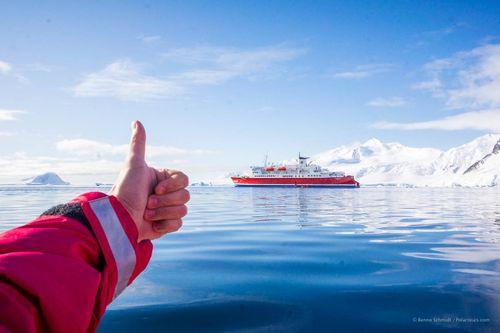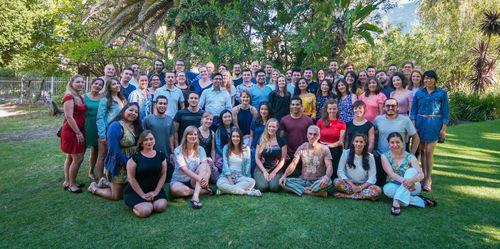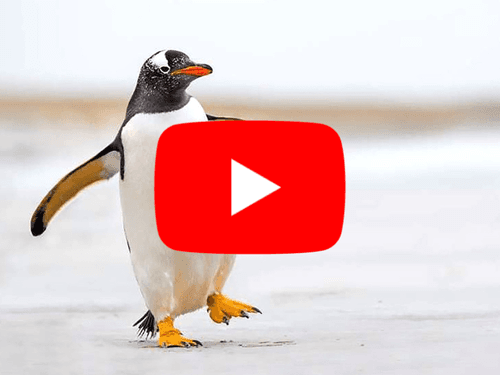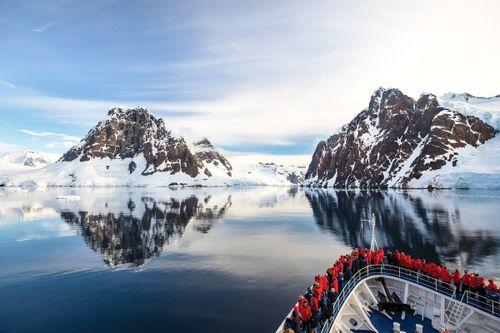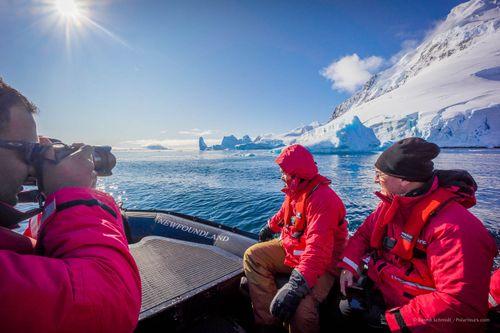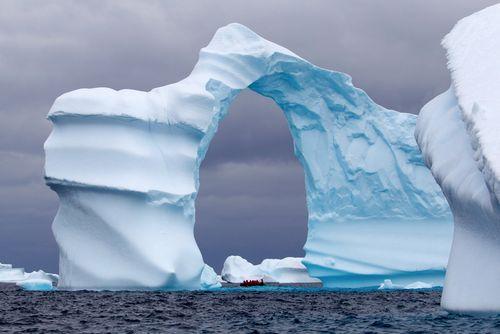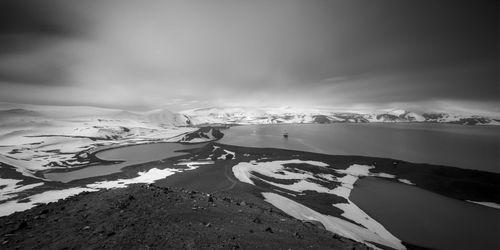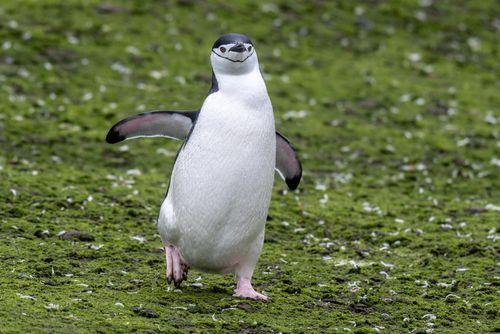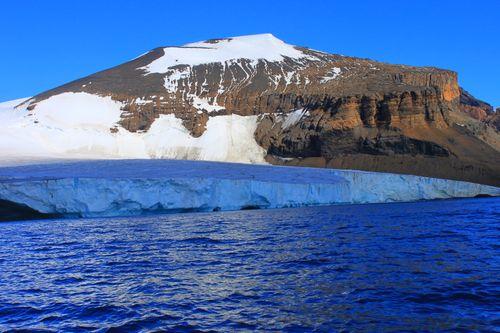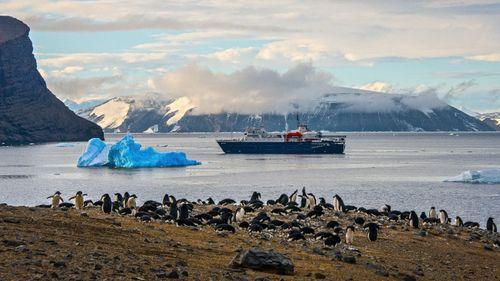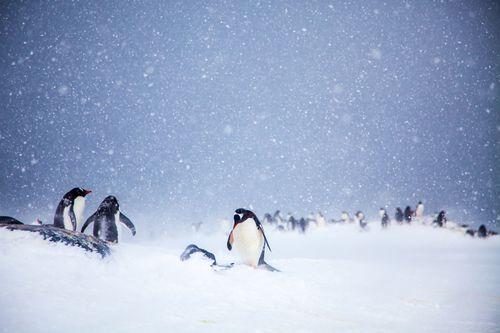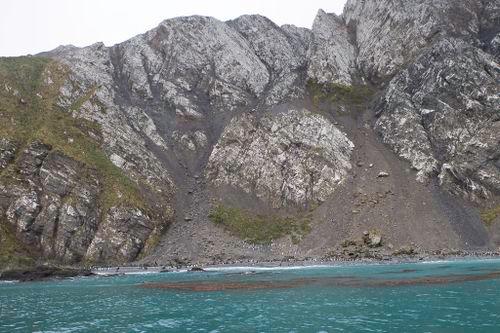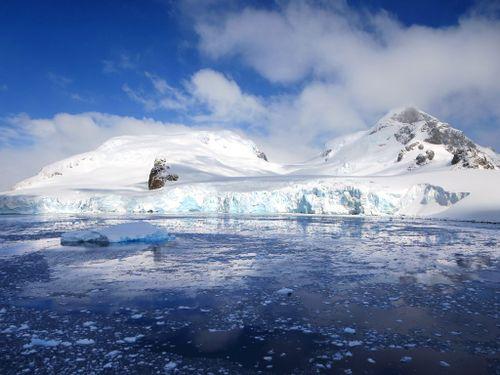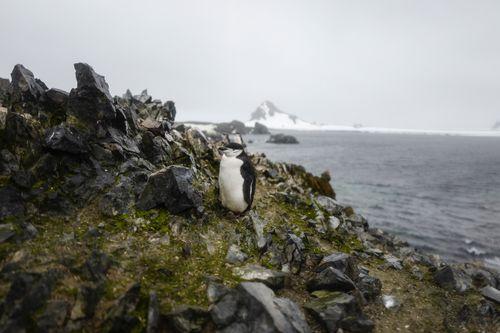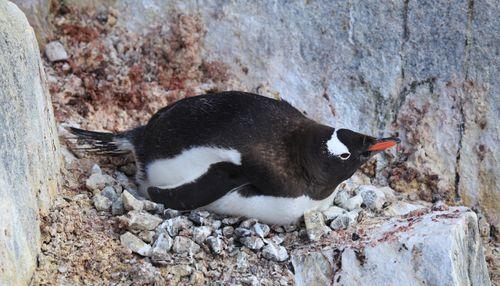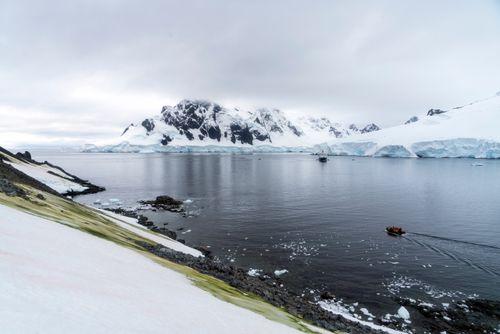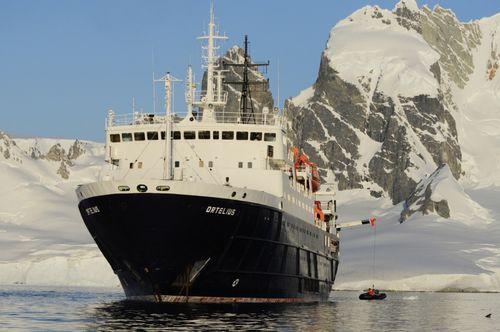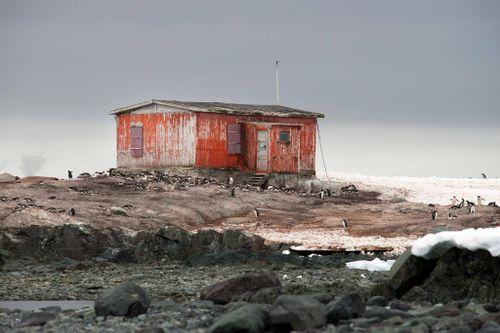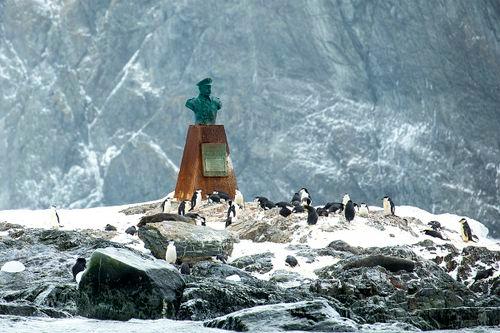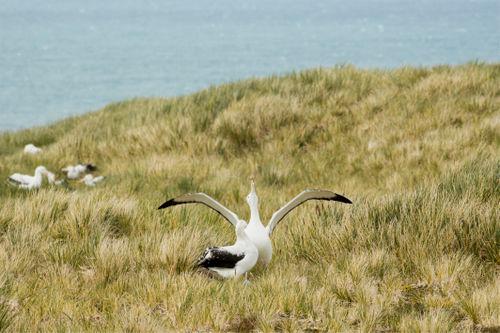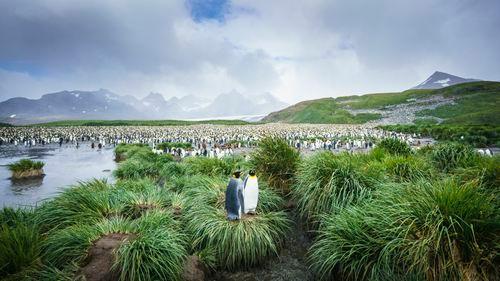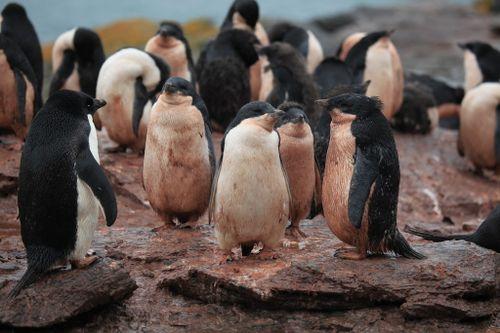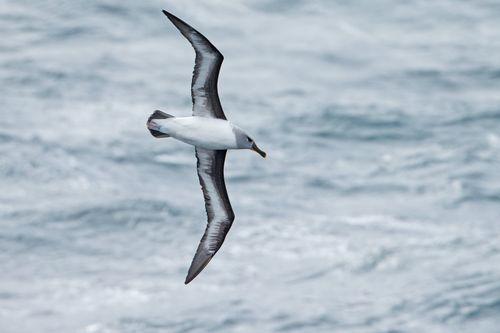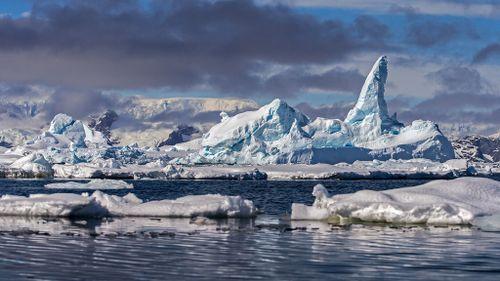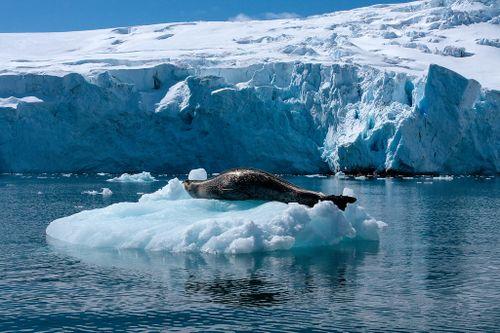
Snowy Sheathbill
Antarctica's only native "land" bird makes a living stealing from penguins
What you need to know about the Snowy Sheathbill
Our Expert Says… "Although often seen as a land bird, that's just an honorary title! It's very much ancestrally a seabird in the same way that gulls are. These are very curious and very forward birds, even landing on the side of Zodiacs and kayaks - or indeed on people's heads! Unfortunately, they produce copious quantities of guano and seem to like 'emptying the tanks' very frequently, so you might want to discourage any from perching too close!"
The snowy sheathbill is the only native Antarctic land bird and can be found in Antarctica, South Georgia, and the South Orkney Islands.
Unlike almost every other bird you will see on your Antarctic adventure, the snowy sheathbill doesn’t have webbed feet. It makes good use of the dexterity that toes give it as it’s a resourceful scavenger, known for its eclectic diet - snowy sheathbills really will eat almost anything!
They are most commonly found in among penguins at their nesting sites (also known as rookeries) where they make the most of the opportunity to steal the regurgitated fish meant for feeding the chicks. If given a chance, they will also eat penguin eggs and even chicks if they are unattended.
As consummate survivors, snowy sheathbills have also been witnessed eating carrion, animal droppings of all kinds, and human waste if they can access it.
Also known as the pale-faced sheathbill, these 38cm (15”) long birds are pure white, apart from their pale-pink face and darker beak. They also have irregular, warty growths between their eyes and beak.
Pictures of Snowy Sheathbill

